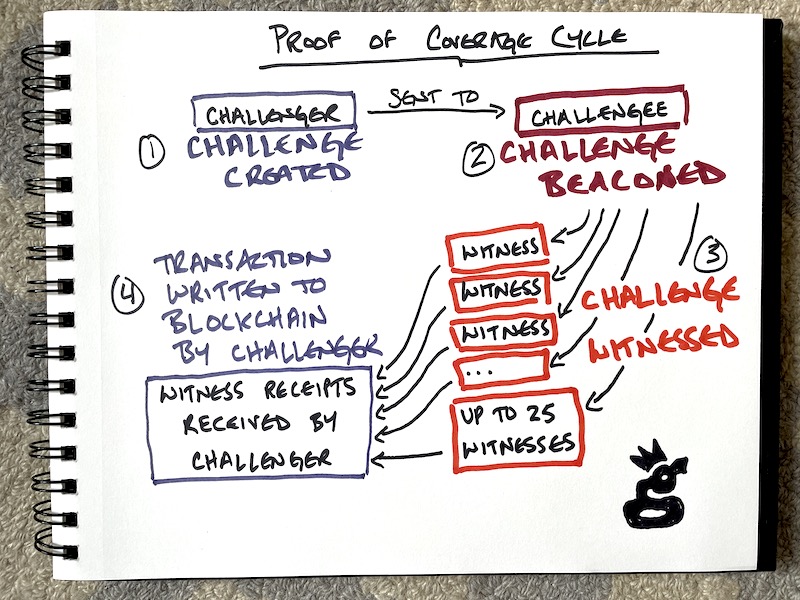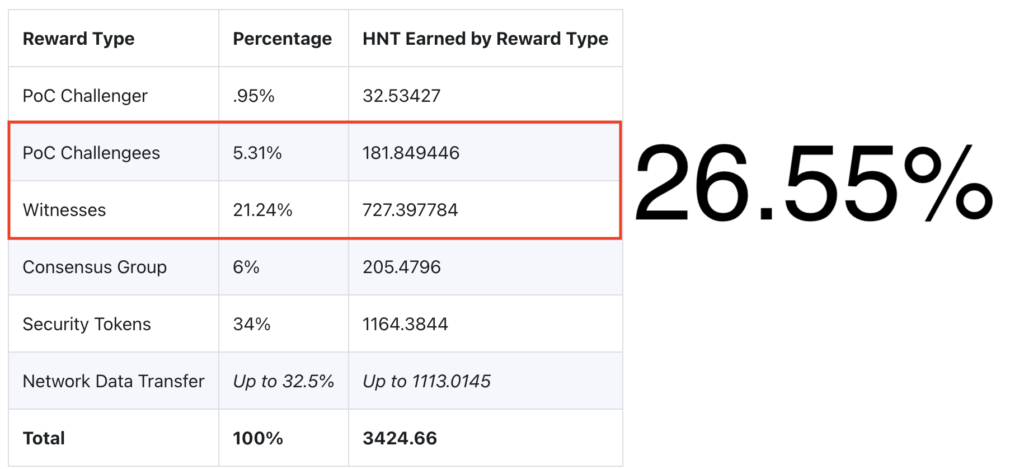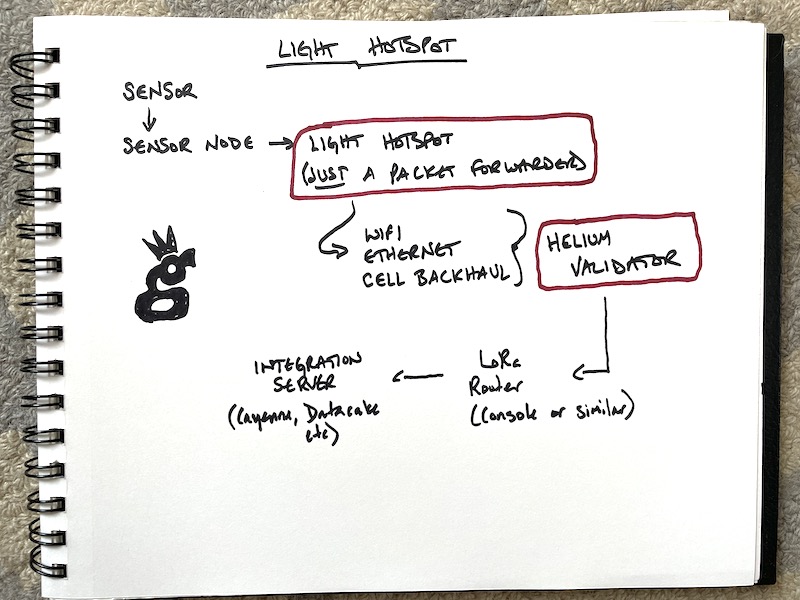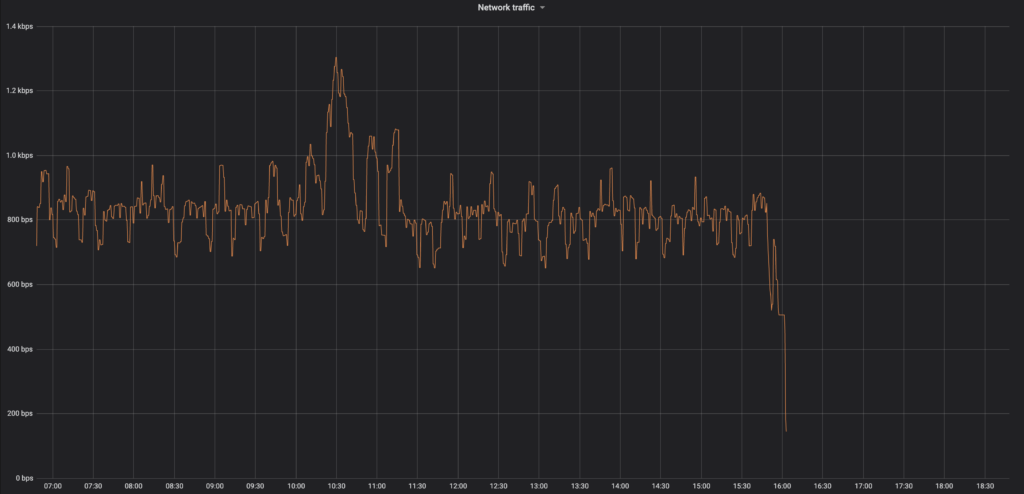What the heck is a Helium Light Hotspot, and why does it matter? If you’re not tech savvy, the whole thing can seem confusing. Let’s clear it up.
We’ll begin with the different types of Hotspots: Regular, Light, and Data Only.
Regular (I call ’em Full Fat) Hotspots are what Helium started out with. They create challenges, they beacon, they witness other hotspots, AND they store a copy of the blockchain on ’em. That last part began creating problems as the network and the blockchain grew.
As the blockchain grew, it took up more and more of the memory of those hotspots, causing the blockchain to bog down. With the blockchain bogged down, hotspots had trouble getting their witness and beacon receipts recorded, which caused spiky (and unsettling) earnings as well as blockchain stalls. Nobody likes it when your money stalls.
To solve this, the Helium community came up with, voted on, and passed the idea to create a new entity on the network called a Validator. Validators don’t do anything except blockchain stuff. They neither beacon nor witness. They can *create* a challenge for Light Hotspots, but for now (March 2022) they just validate (hence the name) all the receipts for all the challenges and witnesses and beacons that hotspots submit. With those validated receipts they form a block and add it to the blockchain.
Having Validators allows us (all of the Helium network) to create and use what’s called a “Light Hotspot”. Light Hotspots don’t have to keep a copy of the blockchain; Validators do that for them.
Validators can also create Challenges for Light Hotspots to Beacon. I know, I know, this is getting confusing.
To clear it up, here’s a short diagram of how the Proof of Coverage Cycle works (the number of hotspots has now dropped from 25 to 14)

Light Hotspots will only be able to do steps 2 and 3, above. Those earn the lion’s share of PoC HNT.
Light Hotspots won’t do step 1 or 4. You may think that’ll lose you a bunch, but it won’t. A Light Hotspot misses out on earning HNT because it won’t create Challenges (aka being a PoC Challenger.) Creating Challenges doesn’t earn very much; less than 1% of all HNT distributed per epoch. An epoch is 30 blocks, and blocks are mined about one every minute.
Light Hotspots will still be able to earn for Beaconing (being a Challengee) and Witnessing. Here’s how it breaks down:

Now, that leaves one more entity to deal with, a Data Only Hotspot. Data Only Hotspots will ONLY be rewarded for processing data. They won’t be able to earn for challenges, witnesses or beacons. They won’t need to. Data Only Hotspots are what the 5G version of a hotspot will be; Data Monsters, and almost nothing else. 🙂
So, that’s the Proof Of Coverage Cycle, which you need in order to understand the next part.
Now, let’s get into what makes a Light Hotspot different from a Regular (Full Fat) Hotspot in slightly more technical terms.
The flow starts with Sensors, because that’s what Helium is built for.
This introduction of “Sensors” can be confusing, because most of what you’ve paid attention to and heard about so far is your hotspot (also known as a “gateway”) getting rewarded solely for connecting (Challenging, Beaconing, & Witnessing) to other hotspots.
Still, sensors are the whole reason the network is being built, so I’m including them in their rightful position at the top of the line.
For now, let’s see what it used to look like, before Validators. This was the case for all current production hotspots as of July 2021 (OG, RAK, Sensecap, Syncrobit, Nebra, etc.)
Both the Miner & the Packet Forwarder are on the same device. This way the Miner could keep a copy of the blockchain for itself as well as create, issue, and record Challenges, Beacons, and Witnessing.

The Sensor picks up data from the environment and passes it to the Sensor Node. The Sensor Node transmits it to the Gateway (Hotspot). The Hotspot spends most of its time listening for those data packets coming from Sensor Nodes. Occasionally, a Hotspot will Beacon out a message of its own for other Hotspots to hear that essentially says, “Here I am, check the strength and bearing of my signal just to be sure.”
Other hotspots Witness that Beacon, record that transaction, and then a group of Hotspots (the Consensus Group) agrees on which transactions are valid and which are gaming, spoofs, or just mistakes. They all connect via some kind of internet connection; WiFi, Ethernet, Cell Backhaul, etc.
Any data that actually got passed from Sensors goes to the LoRa Router (in most cases Helium Console, although you can run your own.)
Finally, that data is turned into a form more readable by humans on an Integration Server, like MyDevices Cayenne, Datacake, or others.
So, that’s how it worked BEFORE Light Hotspots. Can you see the problem? If a tiny little computer (basically a Raspberry Pi) has to do all of that AND keep a copy of the blockchain on it, eventually it gets overwhelmed. What’s the solution? Don’t make it do so much computing-heavy work.
Now let’s look at a Light Hotspot, which keeps the radio element but removes the computing & data-heavy requirements of the miner from the device, and puts that onto the Validators.

Light Hotspots still do the “radio” things; Issue beacons and witness other beacons. They just don’t have to do the resource intensive recording anymore; the Validators are doing that.
The flow after Validators is the same as before: Through a LoRa Router, then an Integration Server.
It’s important to note that what’s getting “validated” by validators is the passage of data; NOT the data itself. That data “lives” outside the blockchain and is heavily encrypted.
All of this is also laid out over on the Helium site, where you can see the milestones and dates for when all this gets completed.
Can you see the difference between Light Hotspots and Full Fat Miners?
Yep, a Light Hotspot is JUST a packet forwarder, which is basically just a radio connected to the internet. It can transmit (beacon) and receive (witness) other gateways, and it can do the same for sensor nodes. It leaves all the heavy lifting of mining and validating to the Validators.
A Regular “Full Fat” Hotspot (every current production miner as of July 2021) has both the Miner AND the Packet Forwarder on it. Here’s what the network data traffic looks like for a group of hotspots. Looks like it mostly stays below 350 kpbs. You’ll notice a little yellow/orange line at the bottom. That’s the network data transfer for a packet forwarder (aka Light Hotspot.)

That group of Helium Hotspots have to send ALL of their mining work to other miners. That’s anywhere from 20–90 GB month! It’s also why the blockchain was bogging down before Validators came online. At any one time, only 16 full fat miners (running on little Raspberry Pi’s!) were processing ALL of the transactions submitted to the entire blockchain from 90k other Hotspots. Whew!
In comparison, a Light Hotspot uses around 100 MB/month. Light Hotspots will still be able to Witness and Beacon and earn from doing that, along with earning data credits for the data they process. Here’s the same graph with just a Light Hotspot on it (the host took it off at 1600 for maintenance and fiddling, so it stopped totally then.)

Since they’re transferring so little data, this means that Light Hotspots can use tiny little computers (like a Pi Zero or smaller) that don’t get bogged down trying to process the transactions of 90k+ full fat hotspots.
That should help with understanding Light Hotspots and why they’re important. Hit me up with questions in the comments, and if you’d like to go deeper in the Helium network, consider hiring me to help with your next project.
Oh, and in case you want a quick vocab rehash:
Sensor — A device that collects environmental data. This could be temperature, wind speed, the number of cars parked in a parking lot, etc.
Sensor Node — This transmits the sensor data to the gateway. Many times a Sensor (like the LHT65) consists of both a Sensor and a Sensor Node.
Gateway — This is what you probably think of as a Helium Hotspot. A Gateway is the thing that receives data from a Sensor Node, then passes it on to the network. Gateways ALSO receive and transmit data with other gateways, a process called Witnessing and Beaconing. That’s covered in depth, here.
Miner — A miner is what records the passage of information (NOT the information itself) and adds it to the blockchain, so anyone can see the information flow. Again, they CAN’T see the data (it’s encrypted), but they can see that data was passed.
Packet Forwarder — This is the radio part of a current production hotspot. It transmits (beacons) out, mostly to prove it is where it says it is. It also listens for incoming packets of information from Sensor Nodes.
Validator — The Validators do what the Miners used to do, and they’ll eventually take over all mining operations. Validators confirm, or validate, the transactions submitted by the miners (and in the future, packet forwarders) to the blockchain. Validators are what make the information on the blockchain trustworthy.
Network Connection - You need to connect your Hotspot or soon, Light Gateway, to the internet somehow. This can happen via WiFi, and Ethernet cord, by cell connection (also known as “cell backhaul”) or satellite connection.
LoRa Router — Helium Console is an example of a this. A LoRa router is the thing that takes the information submitted from the miner through the blockchain and begins to get it into readable form.
Integration Server — This is what allows you to actually “see” the data and use it, as a normal human and not a machine or high wizard of tech. You can use MyDevices Cayenne, or Datacake, or any one of a number of services like those.
This post was written with technical help from @jerm on Discord. All mistakes are mine, all righteous accuracy is his.

Leave a Reply